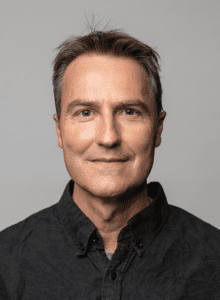Posted By: Kylee Spencer, PhD, Assistant Editor, AJHG
Each month, the editors of The American Journal of Human Genetics interview an author of a recently published paper. This month we check in with Paul to discuss his recent paper “An intronic GAA repeat expansion in FGF14 causes the autosomal-dominant adult-onset ataxia SCA50/ATX-FGF14”.

KS: What motivated you to start working on this project?
PL: My background is the study of the causes and mechanisms of neurogenetic conditions. A part of this has been the identification of novel genetic mechanisms causing ataxia, a condition where individuals have impaired balance and coordination. It has been known for many years that repeat expansions in genomic DNA can cause ataxia, however diagnostic rates are currently very low. Many patients with ataxia involved in our research do not have a clinical presentation consistent with the known repeat expansions for which genetic testing is available, therefore they have been unable to receive a genetic diagnosis. We have been testing the hypothesis that there are as yet unidentified repeat expansions that underlie a major proportion of individuals with cerebellar ataxia.
KS: What about this paper/project most excites you?
PL: Several aspects of this project are very rewarding to me. This project is part of a larger multidisciplinary program which involves very close collaboration between clinicians, bioinformaticians and the lab research team. Working with talented people with diverse skill sets is one of the things that makes medical research such an interesting vocation. For example, I have worked very closely with Melanie Bahlo (Walter Eliza Hall Institute), who co-led this research, for >10 years and it is an absolute pleasure and privilege. In addition, close interaction with participants and families is important to place the research in perspective. Some families have been involved in our research for >10 years; being able to end this diagnostic odyssey and provide answers is both humbling and exceptionally rewarding.
KS: Thinking about the bigger picture, what implications do you see from this work for the larger human genetics community?
PL: Repeat expansions in genomic DNA remain very challenging to both identify and characterize using standard molecular tools and technologies. The ongoing development and application of new molecular and bioinformatic tools, by us and others in the field, is revolutionizing our ability to identify and characterize repeat expansions. In the next few years these tools should translate to diagnostic service providers, increasing the diagnostic rate from ~20% currently to over 70% for ataxia. Indeed, it is becoming more apparent that repeat expansions, as a mutation mechanism, contribute to conditions much more diverse than ataxia alone. More broadly, affected individuals previously excluded from clinical trials due to a lack of a genetic diagnosis will now be able to participate in the increasing number of studies targeted at specific molecular subtypes of ataxia.
KS: What advice do you have for trainees/young scientists?
PL: It is an amazing time to be involved in genetics and, more broadly, medical research. The tools and technologies now available provide many opportunities for translating basic laboratory research to outcomes meaningful for affected individuals and families. Find a lab that is performing research in an area that is of interest to you–if you aren’t excited by the work then it is hard to get others onboard. Try and have a diversity of supervisors to broaden your perspective and provide connections across the field. The skills you acquire are very translatable beyond the narrow focus of your training program.
KS: And for fun, tell us something about your life outside of the lab.
PL: My partner and I are on the search for the perfect G&T year-round. Critical to this is fresh, low-mileage lemon. Therefore, we have peeled and propagated 500 lemon seeds (4 different rootstocks) and grafted five different scion varieties to find the best combinations for our local environment. We anticipate tasting the fruits of our labor in about five years. Who ever said science was boring and not fun?
